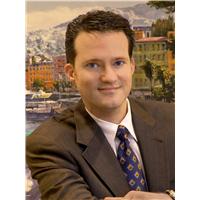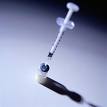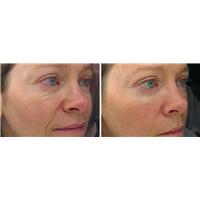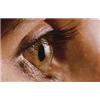Fort Lauderdale: The war between those who advocate natural approaches to disease prevention as opposed to proponents of synthetic drugs continues unabated. At stake are the lives of millions of aging humans who are confronted with institutional propaganda aimed at discrediting therapies that are not FDA approved.
As health-conscious Americans are well aware, a large volume of published research documents significant benefits when aging humans restore DHEA and testosterone hormones to youthful levels.
On October 19, 2006, however, the media reported on a very small study that showed only miniscule results in aging humans who received either DHEA or low-dose testosterone. In response to this one study, the media declared that these hormones are no fountain of youth.1
This one study showing only small benefits to DHEA or testosterone supplementation had serious design flaws that invalidate its conclusions. The newscasters failed to consider these flaws when proclaiming there is no reason for older people to continue taking DHEA.
In todays media frenzied world, scientific journalism is practiced by ambush. The very day a medical study is published, it can become the headline news story of the day. This denies an opportunity for those who might disagree with the studys design and methodologies to rebut what might be junk science. In the case of this recent study questioning the use of DHEA and testosterone, the flaws are so significant as to cause its findings to have little or no meaning.
This article represents Life Extensions initial rebuttal to the recent attack on DHEA and testosterone.
Flaw Number One: Factors Affecting Bone Mass Ignored
One of the anti-aging parameters tested in this study was the effects of DHEA or testosterone on bone mineral density.
Compared to placebo, the study found that in women supplemented with DHEA, there was a small, but significant increase in bone mineral density of the ultradistal radius (a wrist bone). Men who supplemented with DHEA had a small, but significant increase in the bone mineral density of the femoral neck. (The femoral neck connects the shaft of the femur bone to the ball part of the femur in the hip.)
Men who supplemented with testosterone had a significant increase in the bone mineral density of the femoral neck. No increase in bone mineral density was found in the spine or total femur in those who supplemented with DHEA or testosterone.
Based on these findings, the media declared DHEA and testosterone worthless, despite the fact that there was improvement in several measurements of bone mineral density. When viewed in the context of data from previous studies showing significant bone benefit in response to DHEA-testosterone, the findings from this recent study help confirm the effects that these two hormones confer on bone health.
The biggest problem with this study parameter, however, is that it only looked at DHEA or testosterone compared to placebo. It did not monitor the study subjects to ascertain what else they might be doing that would affect their bone density.
As any health-conscious consumer knows, there are many more factors involved in maintaining bone density than just DHEA and testosterone. The study failed to assess diet or the intake of nutrients involved in bone density such as calcium, vitamin D, magnesium, and vitamin K when comparing those who took DHEA or testosterone to the placebo group.
Due to the small size of this study (87 men and 57 women), there is a very real chance that there were differences in terms of bone-protecting nutrient intake between the two groups. This means that it is possible that subjects in the placebo arm may have taken more calcium, vitamin D, vitamin K, magnesium, etc. than those in the DHEA and/or testosterone group. The failure to specifically control for bone-building nutrient intake points to one of several flaws in the study design.
Flaw Number Two: Factors Affecting Body Composition Ignored
Another anti-aging parameter this study looked at was the effects of DHEA or testosterone on body fat and muscle mass.
Compared to placebo, elderly men supplemented with DHEA had a decrease in the proportion of body fat (as measured by fat-free mass). When the male and female groups were combined, the DHEA group had a small but significant decrease in the proportion of body fat. Men in the testosterone group had a significant reduction in body fat (as measured by fat-free mass).
These findings confirm previous studies showing reductions in body fat in those supplementing with DHEA or testosterone. For example, a recent 2004 study showed that DHEA supplementation in aging men and women was associated with significant reductions in abdominal fat as well as improvements in insulin sensitivity.2
When measuring another area of body composition, women receiving DHEA showed a 9.2 cm2 increase of lean thigh muscle area compared to a 3.5 cm2 decrease in the placebo group. However, because women in the placebo group already had higher thigh-muscle area than in the DHEA group at baseline, the study authors concluded that DHEA had no effect on thigh-muscle area. This conclusion is particularly biased when one considers that lean muscle mass in the thigh of women treated with DHEA was higher than the placebo group at the end of the study, even though the DHEA group had a less lean muscle mass at the beginning of the study compared to placebo.
Despite these favorable body composition findings, the media stated that consumers who bought DHEA supplements were receiving no value. Not only is this another false conclusion, but the failure of the study design to assess calorie intake, types of calories consumed, and other factors involved in body fat composition renders even these modest reductions in body fat highly suspect. In other words, since this was such a small study, if just a few participants in either the DHEA or testosterone group increased calorie intake, or altered their diet to cause increases in body fat, this could have skewed the results significantly. If on the other hand, just a few participants in the placebo group reduced their calorie intake, this would have distorted the final results even more.
Further twisting the findings related to body composition was the criteria that excluded anyone from participating in the study who engaged in exercise lasting more than 20 minutes more than two times a week. Exercise is an important component of an anti-aging program, and excluding those who regularly engage in exercise helped ensure that neither the active or placebo group would demonstrate significant changes.
We know that DHEA works to enhance the benefits of exercise. For example, a recent study showed that DHEA potentiated the effect of 4 months of weight-lifting training on muscle strength and on thigh muscle mass.3
The failure of the study design to incorporate both DHEA and exercise to build bone and muscle mass is embarrassing from a scientific standpoint, and highlights another defect in the trial design.
Flaw Number Three: No Individualized Program
In this recent study, all participants received the exact same dose of DHEA or testosterone for two straight years. It did not matter if individual blood levels skyrocketed too high or failed to even reach minimum levels needed to achieve efficacy. As far as the designers of this study were concerned, one size (i.e., the same dose) fits all.
Hormone requirements vary considerably between individuals. Some people, for instance, only need 15 mg/day of DHEA, while others require over 100 mg/day to attain similar blood levels. In this study, all male participants in the active group were given 75 mg/day of DHEA or 5 mg/day of transdermal testosterone. All women participants in the active group were given 50 mg/day of DHEA.
Based on reviewing thousands of blood test results of people taking DHEA and/or testosterone, Life Extension researchers have observed huge variations in individual responses to DHEA and testosterone supplemental intake. This has also been confirmed by the hundreds of practicing physicians who prescribe these hormones and then do follow-up blood tests to make sure their patients achieve optimal hormone balance.
There was no attempt to achieve optimal blood levels of DHEA or testosterone in these study participants. The sole objective of this study was to give each participant in the active group the exact same dose of hormone(s) and then monitor some of the effects compared to placebo. We at Life Extension view the failure to use blood test results to adjust individual hormone dosing as the equivalent of target shooting while blindfolded and then saying it is impossible to consistently hit the target.
The fact that the conventional doctors who designed this study failed to factor in the need for individualized dosing is not surprising. For decades, physicians have prescribed the same dose of estrogen and other drugs to patients regardless of individual need. Despite the existence of millions of copies of books that specify how DHEA-testosterone should be properly dosed, the doctors who designed this flawed study failed to adjust the amount of DHEA-testosterone given to study subjects based on individual blood readings. Nor was there even a mention of the fact that doctors who prescribe these hormones do indeed adjust doses based on blood or saliva test results.
The flawed methodology applied to dosing DHEA and testosterone from this trial is another defect in trial design. Yet, this egregious error did not stop the headline hungry media from vilifying DHEA and testosterone.
Flaw Number Four: Failure to Suppress Excess Estrogen
As men mature past age 50, an enzyme called aromatase increases in their bodies.
The aromatase enzyme converts testosterone to estrogen. When testosterone drugs are given to aging men, the aromatase enzyme can convert the testosterone into excess estrogen, which causes undesirable effects.
One problem with excess estrogen in aging men is that the balance of testosterone to estrogen is disrupted, with the excess estrogen contributing to feminizing effects in aging men.
In the study the media used to attack DHEA-testosterone, levels of estrogen increased dramatically in both men and women in the active group as opposed to the placebo group. Instead of carefully assessing individual response and taking steps such as reducing the dose of DHEA or prescribing aromatase-inhibitors (such the drug Arimidex® or nutrients like zinc, nettle, and chrysin) in response to high estrogen levels, many study participants were allowed to continue with undesirably high estrogen levels.
Interestingly, some beneficial effects were shown in the active (DHEA or testosterone) groups, despite the high levels of estrogen that manifested. Had aromatase inhibitors been used in the male group where appropriate, and DHEA dosing reduced in the female group when estrogen levels increased too much, the beneficial effects of DHEA or testosterone could have been exponentially enhanced.
The failure to protect against excess estrogen production in response to DHEA or testosterone therapy invalidates this studys findings. The media, however, never gave the experts on anti-aging medicine an opportunity to point out this significant flaw.
The medias biased assassination of DHEA-testosterone will result in most aging Americans remembering their newscaster proclaiming that hormone restoration is a waste of money. There was no scientific debate
just a public relations coup by todays prescription drug-financed medical establishment.
Flaw Number Five: Testosterone Not Restored to Youthful Levels
In studies showing dramatic anti-aging effects in response to testosterone therapy, levels of testosterone were restored to youthful ranges (500-1200 ng/dL). Subjects receiving testosterone in this recent flawed study only increased their total blood testosterone levels from 357 ng/dL to 461 ng/dL
well below optimal youthful ranges.
Median levels of biologically active free testosterone remained below normal youthful ranges throughout the study and did not reach the higher levels recommended by anti-aging experts.
The authors of the study acknowledged that they gave these men low doses of testosterone when stating in their conclusion: Additional long-term studies of testosterone are warranted to determine the risk-benefit ratio of higher doses.
Despite the obvious failure to adequately increase testosterone blood levels, the media participated in this hoax to deceive American men into believing that they should not replenish the testosterone lost to aging. This is great news for pharmaceutical companies who stand to sell a lot more prescription drugs that treat associated problems related to suboptimal hormone levels such as sexual health, depression, cardiovascular health, neurological disorders, and the many chronic inflammatory conditions that can all be effectively prevented by correcting the underlying hormonal deficiency in the first place.
Flaw Number Six: Inadequate Numbers of Study Subjects to Assess Quality of Life.
Another anti-aging parameter of this study looked at quality of life scores and found no improvement.
Previous studies, however, tested these hormones on people suffering from depression and other quality of life problems. These previous studies showed that DHEA or testosterone was effective in people who suffered from these disorders. For example, a 2005 study showed that in middle-aged men and women suffering from minor and major depression, DHEA significantly reduced depression scores and improved sexual function scores as against the placebo group.4
The fact that individuals not suffering from these disorders did not report improvements in their quality of life scores could have been due to faulty data collection or the very small study size.
In fact, the editorial that accompanied this study stated that there were too few subjects enrolled to detect clinically meaningful differences in this quality of life parameter. This same editorial, however, also called for DHEA to be regulated as a prescription drug.
Flaw Number Seven: Inadequate numbers of study subjects to assess effects on glucose control
Type II diabetes is characterized by systemic insulin resistance that results in chronic hyperglycemia (excess blood sugar). Previous studies indicate that DHEA and testosterone protect against insulin resistance. For example, a 2003 trial showed that 25 mg of DHEA improved insulin sensitivity as well as endothelial function in hypercholesterolemic men.5
In this study on healthy people, DHEA or testosterone did not improve markers related to insulin resistance. The fact that the study size was very small may explain why the finding of this study parameter was neutral.
Flaw Number Eight: Increases in Physical Strength Downplayed
Compared to baselines, men and women taking DHEA could chest press 4.99 pounds more weight than the placebo group after two years. Men receiving low-dose testosterone were able to chest press 9.99 more pounds compared to the placebo group after two years.
The studys authors downplayed these improvements by stating three months of resistance exercise training increased chest press strength by an average of 33 pounds in older people.
The contradiction is that the study subjects were not allowed to participate in more than 20 minutes of exercise more than two times a week. This restriction would have severely limited an improvement in physical strength, yet even with this exercise restriction, there was still a measurable improvement in physical strength in those receiving DHEA or testosterone compared to placebo
a fact the media choose to ignore when attacking the use of these hormones for anti-aging purposes.
Flaw Number Nine: It Takes More Than Hormones to Slow Aging Parameters
There are 14 independent causes of aging that have been identified. The good news is that there are ways of at least partially protecting against each one of these 14 different causes of age-related degeneration.
As has been the case with previous flawed studies, conventional doctors restrict test subjects to a single approach that might beneficially affect some aging parameters. When that single approach fails to produce significant results, the medical establishment (and the media) proclaims the nutrient or hormone to be worthless.
Patients that visit anti-aging doctors for hormone replacement therapy are prescribed a lot more than just DHEA or testosterone. They are often put on comprehensive programs that involve dietary changes, exercise, synergistic hormone modulating drugs-nutrients, replacement of other hormones lost to aging (like progesterone, pregnenolone, thyroid), and dietary supplements (like CoQ10, carnitine, lipoic acid, carnosine, fish oil) that address specific age-accelerating mechanisms.
The design of this study virtually guaranteed failure since it only provided subjects with DHEA or low-dose testosterone. An absolute consensus amongst those in the anti-aging community is that a lot more than sub-optimal hormone therapy is required to slow and partially reverse aging, though proper hormone balancing is a critical component of an overall program.
The appendix at the end of this article articulates the 14 independent causes of aging and what can be done to partially counteract them. When reviewing these pathological mechanisms involved in normal aging, it would be absurd to assume that miraculous results could be obtained by correcting only one of them (i.e. hormone imbalance), as was done in this flawed study.
Flaw Number Ten: Study Did Not Evaluate All of DHEAs Effects
Conventional doctors and the media took the mediocre findings from this flawed study and concluded that DHEA or testosterone replacement is of no value to elderly humans. Yet the parameters used in the study to assess aging were limited to:
1. Bone mineral density
2. Body fat-muscle composition
3. Quality of life scores
4. Insulin resistance and glucose tolerance
5. Physical performance
Despite the failure to customize the dose of DHEA or testosterone based on individual need, the failure to protect against excess estrogen, the failure to assess for other independent factors (such as the effect of food intake on body fat mass), the failure to achieve optimized blood levels of these hormones, and the failure to account for nutrients needed to maintain or restore these narrow parameters of aging (such as whether test subjects were taking calcium/vitamin D to build bone), there was still some benefit shown in the DHEA and testosterone groups.
What was blatantly omitted from the attack on DHEA-testosterone was the fact that aging individuals take these hormones for purposes that go beyond the narrow parameters evaluated in this study. For instance, DHEA has long been used to help maintain neurological, sexual, and immune function in those going through normal aging processes and those afflicted with certain disorders. The most striking benefit associated with DHEA (and testosterone), however, may have to do with protecting against endothelial dysfunction that can lead to heart attack, stroke, and other vascular diseases.
How many lives might be lost?
The two-year study used to vilify DHEA only had 87 male participants, with one-third of the subjects receiving placebo. Based on this one study, conventional doctors are calling for DHEA to be removed from the marketplace and turned into a prescription drug. There were no adverse effects reported during this study.
Overlooked by the media are the hundreds of studies showing significant benefits to those who maintain higher DHEA or testosterone blood levels. For example, in a larger study involving 1,700 aging males carried out over nine-years, those with the lowest levels of DHEA were 60% more likely to develop coronary artery disease.6
About one million people die from a vascular-related disease each year
Compelling evidence indicates that many of these deaths could be prevented if aging men maintained their DHEA and testosterone in more youthful ranges. If DHEA-testosterone reduced these deaths by only 20%, then about 200,000 American lives could be saved each year.
Dont Be a Victim of Drug Company Propaganda
In response to this flawed study, conventional doctors are calling for the FDA to regulate DHEA as a prescription drug. Despite this study showing no adverse effects from DHEA or testosterone, the rationale is that people are being ripped off when they are sold these hormones for anti-aging purposes. This drastic conclusion flies in the face of hundreds of published studies validating the anti-aging benefits in response to DHEA and testosterone restoration.
There is little subtlety in what these mainstream doctors are really trying to accomplish. They make it clear that based on this one study, prescription bisphosphonate drugs would re-build bone better than natural hormone replacement. While bisphosphonate drugs have a role in preventing cancer metastasis to the bone, they are very expensive and cause serious side effects in some people. DHEA, on the other hand, is so cheap it is difficult to credibly claim that anyone is being ripped off when buying it, as one doctor was quoted as stating.
It is in the economic interest of the pharmaceutical industry to see restrictions placed on DHEA and testosterone as there would be a surge of age-related diseases if free access to these hormones were to be denied. This increase in age-related disease would directly correlate with the widespread deficiencies of DHEA and testosterone that would occur if consumer access to these hormones was impeded by governmental edict.
Financial Conflicts of Interest
Some of the authors of the flawed study on DHEA and testosterone have connections to the pharmaceutical industry, and drug money lobbyists can heavily influence how these studies are designed.
The doctor who most viciously attacked DHEA, stating that consumers were being ripped-off when buying it, admitted to receiving consulting fees and/or grants from drug companies that include Pfizer, Novo Nordisk, Novartis, and Duocort.7
While all these companies sell drugs whose sales would be adversely affected if more people used DHEA, the Duocort pharmaceutical companys website specifically states that it is developing drugs aimed at chronic adrenal hormone replacement therapy. DHEA is synthesized primarily in the adrenal glands. DHEA is used by aging people because after age 30, there is a chronic deficiency in adrenal DHEA production.
While Duocorts public focus is on developing long-acting glucocorticoid drugs to treat adrenal insufficiency, it seems more than a coincidence that the most vocal critic of DHEA supplements has received consulting fees from a company whose website states:
Treatment of adrenal insufficiency involves replacing, or substituting, the hormones that the adrenal glands are not making.
Based on conventional medicines logic, it is alright to replace hormones (like DHEA) the adrenal glands are not making as long as the replacement is a patented prescription drug. The news media totally overlooked these financial conflicts of interest when regurgitating the anti-DHEA propaganda of doctors on the payroll of the pharmaceutical industry.
Conclusion
In response to a plethora of positive studies linking higher DHEA levels to lower degenerative disease risk,8-33 DHEA has become an enormously popular low cost dietary supplement. The use of testosterone enhancing products by aging men has aalso grown exponentially over the past decade.
An evaluation of the recent study that questions the anti-aging efficacy of DHEA and testosterone reveals serious flaws that invalidate the studys findings. Despite these flaws, the actual findings show a small but significant benefit to DHEA-testosterone when measuring certain parameters related to aging.
The media choose to downplay the benefits demonstrated in this study and instead launched an attack against the use of DHEA-testosterone for anti-aging purposes.
Proponents of natural hormone restoration have been very clear about the need to achieve optimal levels of testosterone and DHEA. The subjects in this recent study were not individually dosed and therefore did not come anywhere close to achieving optimal blood levels. It is thus no surprise that the results of this flawed study are inconsistent with the known health benefits of DHEA.
The financial existence of drug companies is dependent on substantial numbers of aging Americans contracting degenerative diseases. Drug companies therefore have an economic interest in finding ways to discourage and even criminalize the use of youth hormones that protect against age-related disease. For instance, if DHEA and testosterone supplementation only lowered cardiovascular disease rates by 20%, the drug industry would face billions of dollars in lost profits, as sales of drugs used to treat vascular diseases would be correspondingly reduced.
In an attempt to discredit the benefits of natural hormone restoration, conventional doctors, some with direct financial links to the pharmaceutical industry, sought to mischaracterize the findings from this very small and flawed study on elderly men and women.
The downplaying of the beneficial findings found in this study, along with ten specific flaws that invalidate its results, represents a biased attempt to discourage aging Americans from maintaining or restoring youthful hormone balance.







